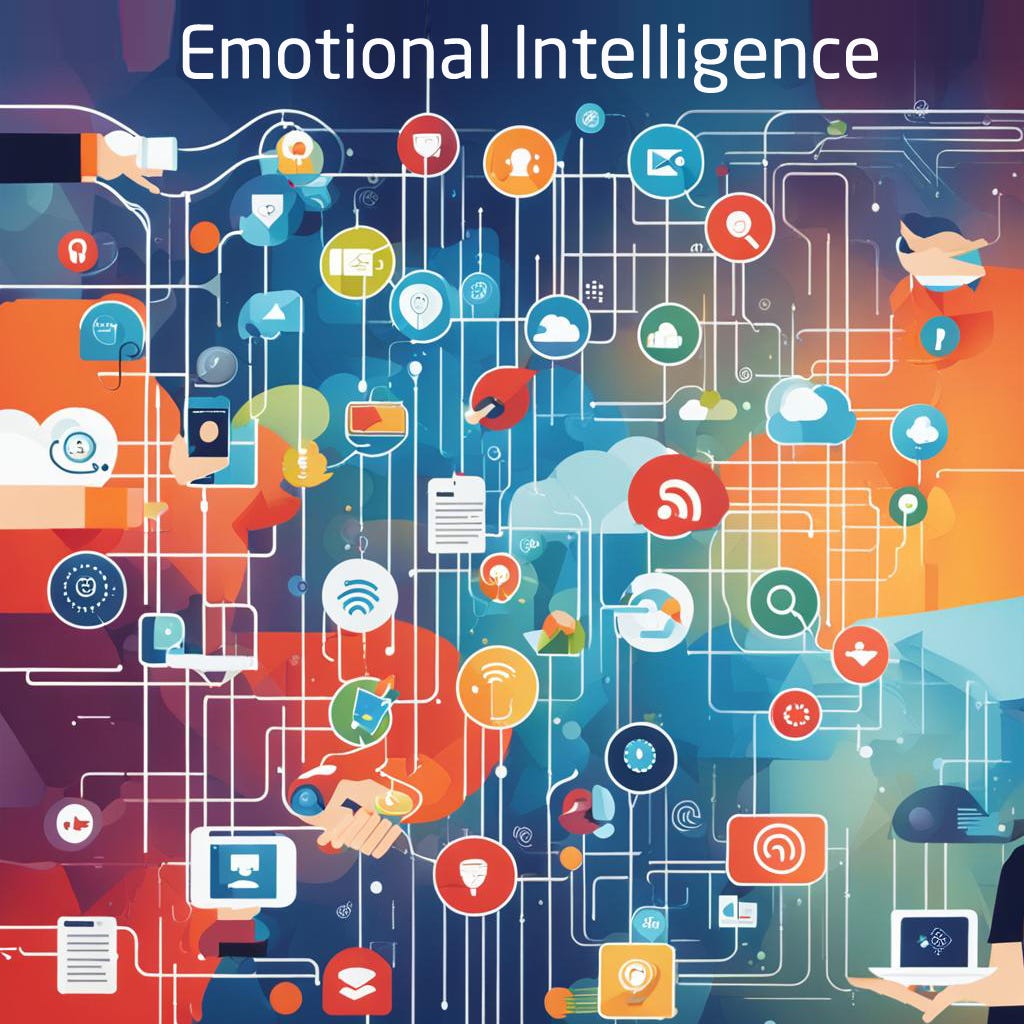Between 65 - 75% of communication for Millennials and GenZ occurs digitally1. This shift towards technology-mediated communication presents unique challenges. In the case of text-based communication, the lack of nonverbal cues, such as body language and facial expressions, can make it difficult to gauge emotions and intentions, leading to misunderstandings and hindering trust-building. In certain instances, further complicating matters is the uncertainty of the communicator's identity: a real person, an AI chatbot, or even an AI assisting in drafting a message. A simple text message lacking a smile or sigh can be misinterpreted as passive-aggressive, creating ambiguity and potentially causing confusion and discomfort. This disconnect between the ease of digital communication and the complexity of human emotions underscores the critical role of emotional intelligence in understanding communication and building trust between individuals.
Emotional intelligence encompasses the ability to identify, understand, and manage one's own emotions, as well as the emotions of others. Emotional Regulation Theory2 proposes a process for managing emotions that involves identifying emotional responses, evaluating their appropriateness in the situation, and modifying them if necessary. This self-management, emphasized by Daniel Goleman (author of "Emotional Intelligence")3, is crucial for effective communication in the digital age. By regulating emotions before crafting a message, individuals can prevent sending something impulsive or insensitive that could damage trust.
However, emotional intelligence goes beyond just self-management. Self-Awareness Theory4 suggests that individuals are motivated to maintain a consistent self-image and regulate their behavior accordingly. Understanding one's own emotional triggers, as highlighted by Travis Bradberry & Jean Greaves (authors of "Emotional Intelligence 2.0")5, is essential for building trust. For example, if someone knows that criticism, even constructive criticism, tends to make them defensive, they can adjust their communication style to be more empathetic and collaborative. By recognizing their own emotional vulnerabilities, individuals can choose communication strategies that foster trust and understanding in their digital interactions.
The potential of AI systems that analyze emotions in communication through facial expressions and voice tone offers a promising path to improved communication effectiveness6. For instance, AI assistants could be developed to flag potentially passive-aggressive language before a message is sent, or suggest more empathetic phrasing. However, ethical considerations require careful attention. AI chatbots that mimic human interaction could create a false sense of trust, potentially eroding trust in genuine human communication. This potential for manipulation necessitates the continued practice of responsible and ethical development to ensure that AI serves positive social purposes.
Digital communication presents challenges and opportunities. By leveraging skills in emotional intelligence and exploring the possibilities of AI-powered emotional analysis, the potential exists to further foster trust and emotional well-being in an increasingly digital world. This requires vigilance against potential misuse of AI technology, but also openness to its potential to augment and enhance communication and understanding.
LivePerson, Inc. (2018, June 26). Gen Z and millennials now more likely to communicate with each other digitally than in person. PR Newswire: press release distribution, targeting, monitoring and marketing. https://www.prnewswire.com/news-releases/gen-z-and-millennials-now-more-likely-to-communicate-with-each-other-digitally-than-in-person-300537770.html#:~:text=According%20to%20the%20research%2C%20Gen,on%20digital%20channels%20for%20communication.
Kozubal, M., Szuster, A., & Wielgopolan, A. (2023, July 25). Emotional regulation strategies in daily life: The intensity of emotions and regulation choice. Frontiers in Psychology. https://www.frontiersin.org/journals/psychology/articles/10.3389/fpsyg.2023.1218694/full
Goleman, D. (1995). Emotional Intelligence. Daniel Goleman. https://www.danielgoleman.info/books/
Bem, D. J., Berkowitz, L., Carver, C. S., Duval, S., Ickes, W. J., Liebling, B. A., Mills, J., Scheier, M. F., Singer, J. E., Wicklund, R. A., Allen, V. L., Bloodstein, O., Brehm, J. W., Brown, S. F., Cupchik, G. C., Davis, D., Dittmann, A. T., … Festinger, L. (2008, April 11). Objective self-awareness. Advances in Experimental Social Psychology. https://www.sciencedirect.com/science/article/abs/pii/S006526010860252X
Bradberry, T., & Greaves, J. (2023, October 16). Books - talentsmarteq - emotional intelligence training. TalentSmartEQ. https://www.talentsmarteq.com/books/
Zhao, S., Jia, G., Yang, J., Ding, G., & Keutzer, K. (2021). Emotion recognition from multiple modalities. Arxiv. https://arxiv.org/pdf/2108.10152


